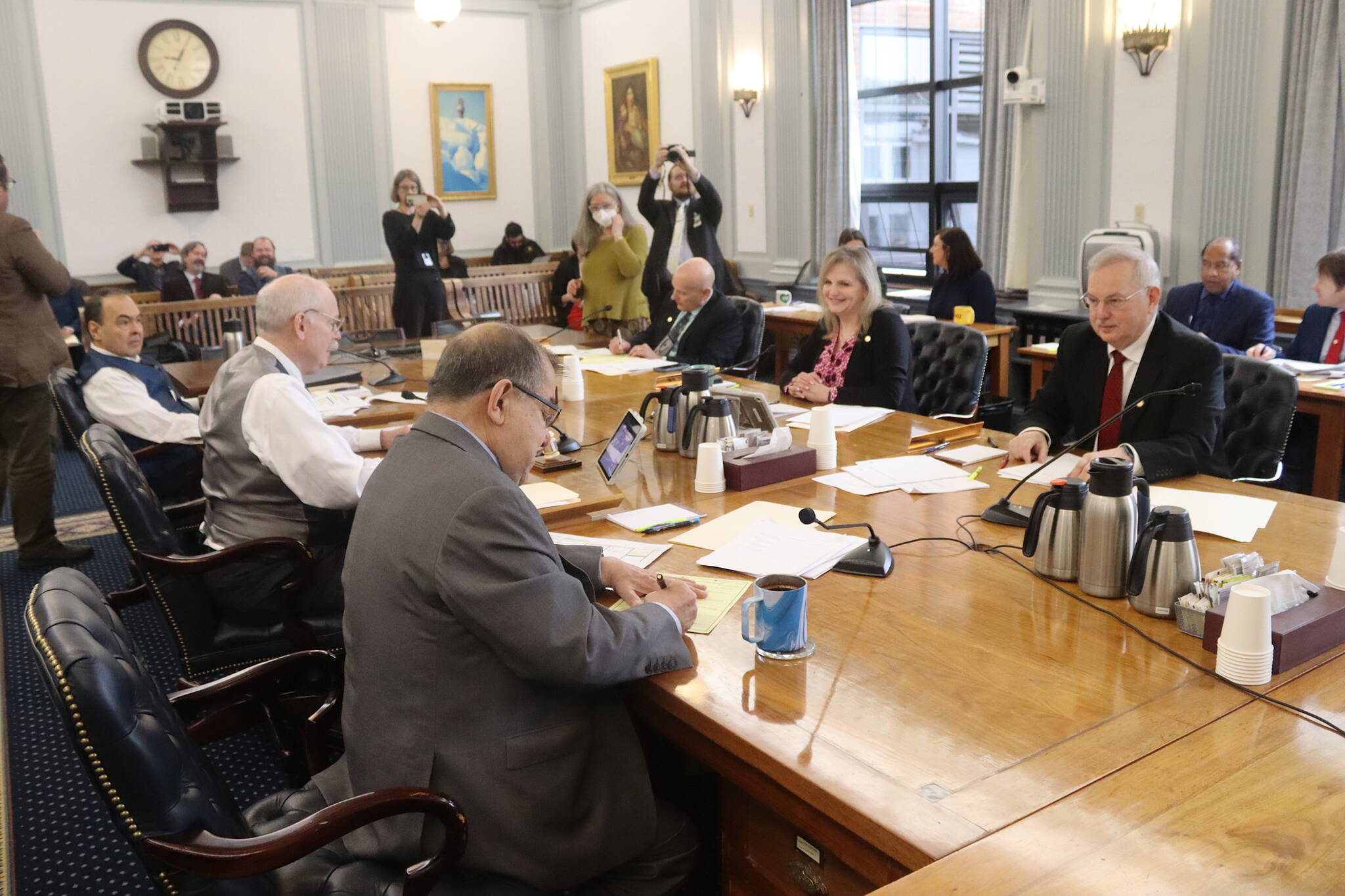A Permanent Fund dividend of about $1,655 is included in the compromise state operating budget for next year approved by a joint House and Senate conference committee on Tuesday morning, clearing the way for the budget’s passage before the legislative session’s Wednesday’s adjournment deadline.
Numerous major issues and bills are still pending including trying to provide funding for correspondence schools following a court ruling invalidating a state law allocating such funds and energy legislation intended to address natural gas shortages in Southcentral Alaska. If issues lawmakers consider essential are not resolved, the Legislature can extend the session by 10 days with a two-thirds vote of the House and Senate, or Gov. Mike Dunleavy can order a special session.
The projected PFD this fall will include an estimated $1,360 from available Permanent Fund earnings and a $295 “energy relief dividend” based on average oil prices this year being higher than forecast last spring, said Sen. Bert Stedman, a Sitka Republican who co-chairs the Senate Finance Committee.
The dividend amount is based on allocating 25% of available Permanent Fund earnings to dividends and the rest to state spending, the same formula used for last year’s PFD of $1,312, and splits the revenue from higher prices between dividend payments and budget reserve fund.
The operating budget passed by the House called for a combined PFD of $2,270 that allocated a higher percentage of fund earnings to dividends, as well as all of the revenue from higher oil prices to the supplemental energy dividend. Rep. DeLena Johnson, an Anchorage Republican who co-chairs the House Finance Committee, said the Senate’s dividend amount was accepted in the compromise budget in order to ensure sufficient funding for a range of capital improvement projects while avoiding a budget deficit.
“This isn’t just ‘What can we afford for a dividend?’” she said. “This was something (with) a lot of pieces to it. We have a solid capital budget. We have money going into savings.”
Dunleavy, in his proposed budget, was seeking a dividend well above $3,000 that would have incurred a roughly $1 billion deficit. The shortfall could in theory be covered by the $2.7 billion Constitutional Budget Reserve, but tapping into it requires a three-quarters vote of the Legislature, and both the Senate majority and 16-member House minority caucus have expressed strong opposition to using the reserve for higher dividends.
The operating budget for the fiscal year starting July 1 includes a one-time $680 increase to the $5,960 Base Student Allocation for public schools, which was also passed in last year’s budget. However, Dunleavy used his line-item veto to eliminate half of the increase when he signed the budget and the Legislature failed by one vote to override the veto earlier this year. He has stated he is “open to the increase” for the coming year’s budget.
The $4 billion capital budget — about $550 million of which is state funds and the rest from the federal government — got final passage last Friday when the Senate concurred with the version passed by the House. Maintenance for K-12 schools, especially in rural areas, and housing and renewable energy projects were among the priority items.
• Contact Mark Sabbatini at mark.sabbatini@juneauempire.com or (907) 957-2306.

